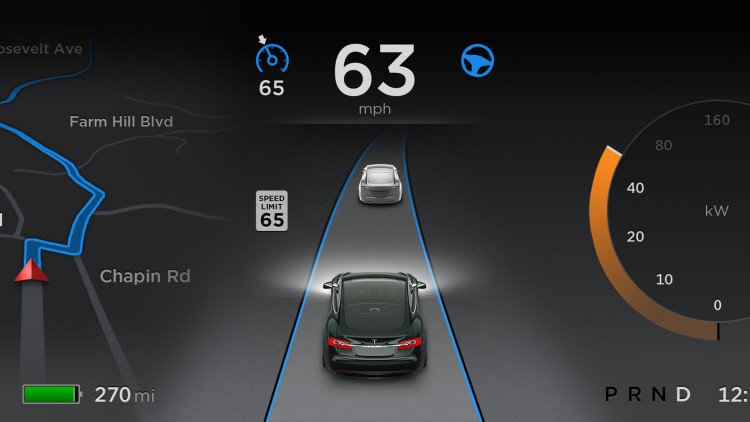The hacking community has taken quite an interest in the Tesla Model S since its introduction, and they'll certainly continue to tinker with the Model X and Model 3 in the future. One man who has made a name for himself for his Tesla hacks is Jason Hughes, AKA wk057. He's the guy who found the P100D badge design within a firmware update of his Model S (and accused the automaker of attempting to subsequently downgrade his firmware). Now, Hughes has conducted a teardown of Tesla's Autopilot module, and has posted photos and findings to his new website.
As Hughes begins to take the module apart, we get a look at the camera, which mounts to the windshield (high-res image here). It's apparent early on that the module is designed to dissipate heat. "Most of the case is basically a heat sink," writes Hughes of the rear side (image). "This thing gets HOT."
Unscrewing and removing the portion of the module with the heat sink reveals the rear of the camera portion (image), with its own heat sink there, too. Hughes points out a multitude of exposed test points, assumingly for technicians to run diagnostics from. Hughes hints that he may tinker with those in a later update.
His next photo shows the bottom of printed circuit board (PCB). "Nothing too interesting," Hughes notes. This image shows a Model S silhouette logo on the board, plus a symbol showing that the PCB is lead-free.
The flip side of the PCB (image) has the heart of the Autopilot module: a MobileEye EyeQ3 chip. This is the processor that makes sense of the visual data captured by the module's camera. It's what recognizes traffic signs, spots other vehicles and pedestrians, and reads lane markings in order to automate driving functions. Other automakers also use this processor in their vision systems, and MobilEye is working on a fourth-generation version that can analyze information from up to eight cameras. It's scheduled to make its way into cars beginning in 2018.
Also on the circuit board are RAM chips and what Hughes calls a "generic" digital signal processor.
As Hughes points out, there are many other components to Tesla's Autopilot system, including radar, ultrasonic sensors, and iBooster braking system from Bosch, all of which work together. This camera module, however, and its MobiliEye EyeQ3 processor, are at the core of the Autopilot system.
Have a knowledge of this sort of thing? Make sure to point out your own observations in the comments below.
Nouvelles connexes



